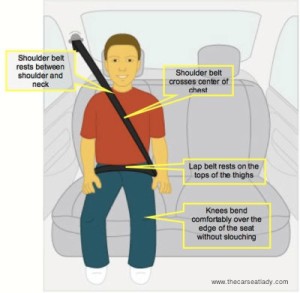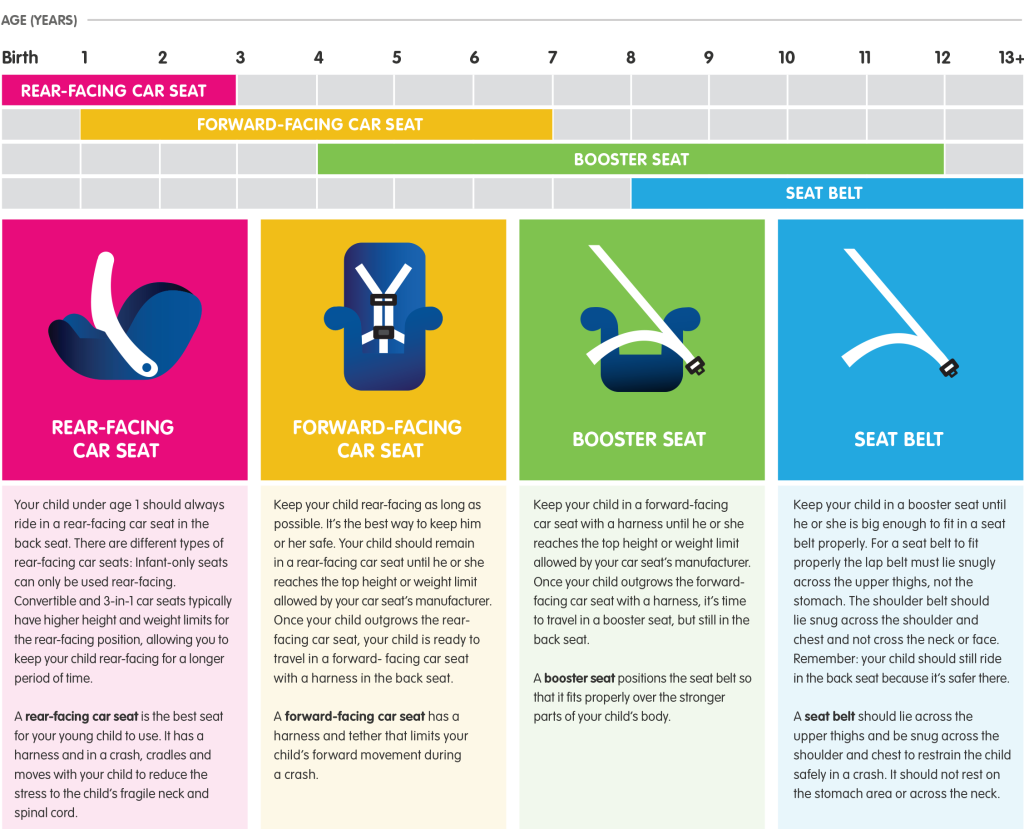Choosing a Car Seat or Booster Seat
There are so many car seat types and models–how do you know which one is right for your child? The right car seat or booster fits your child and your car, and is one you will use correctly every time you travel. Not only will your child ride as safely as possible, you will be establishing the foundation for a lifelong habit of seat belt use every time your child travels.
If you are in financial need of a car seat or booster seat a limited number are available for a small donation. Please contact AIPC for details and to schedule an appointment.
Car Seats in Alaska

Birth – 12 months
Alaska Law requires children less than one year or children older than one year but less than 20 pounds to be secured in a rear-facing car seat.
The American Academy of Pediatrics recommends keeping children rear-facing until the age of two.

1 – 4 years
Alaska Law requires children one to four years old who weigh over 20 pounds to be properly secured in an appropriate child restraint.
Keep your child in a 5-point harness forward-facing car seat until the top height and weight limit allowed by the car seat.

4 – 7 years
Once your child outgrows the forward-facing car seat it’s time for a booster seat with a shoulder-lap seat belt.
Alaska Law requires children over 4 years and less than 8 years of age who are under 4’9” or less than 65 lbs be properly secured in car seat or booster seat.

8 – 12 years
Keep your child in a booster seat until big enough to fit in a seat belt property. For a seat belt to fit property the lap belt must lay snuggly across the upper thighs, not the stomach. The shoulder belt should lie snug across the shoulder and chest and not cross the neck or face.
Four Steps of Child Passenger Safety
Booster Seats
Keep your child in a forward-facing car seat with a harness until he or she reaches the top limit allowed by you car seat’s manufacturer. Once your child outgrows the forward-facing car seat, it’s time for your child to travel in a booster seat, but still in the back. Alaska Law requires children over 4 years and less than 8 years of age who are under 4’9″ or less than 65 pounds to be properly secured in a car seat or booster seat. Keep your child in a booster seat until they are big enough to sit in a seat belt properly. For a seat belt to fit properly the seat belt must lie snugly across the upper thighs, not the stomach. The shoulder belt should lie snug across the shoulder and chest and not cross the neck or face.
The 5-Step Seat Belt Test
- Does the child sit all the way back against the auto seat?
- Do the child’s knees bend comfortably at the edge of the auto seat?
- Does the belt cross the shoulder between the neck and arm?
- Is the lap belt as low as possible, touching the thighs?
- Can the child stay seated like this for the whole trip?

Links
- For additional information about child passenger safety in Alaska, visit Alaska Child Passenger Safety Coalition.
- To find a car seat inspection location, use NHTSA Child Car Seat Inspection Station locator.
- Need some help finding the car seat that is right for you? Visit NTHSA Child Seats: Ease of Use Ratings.
- For car seat information and other child safety tips visit Parents Central: From Car Seats to Car Keys.
- Is your car or booster seat safe to use? Use NHTSA’s Child Seat Recall List.


